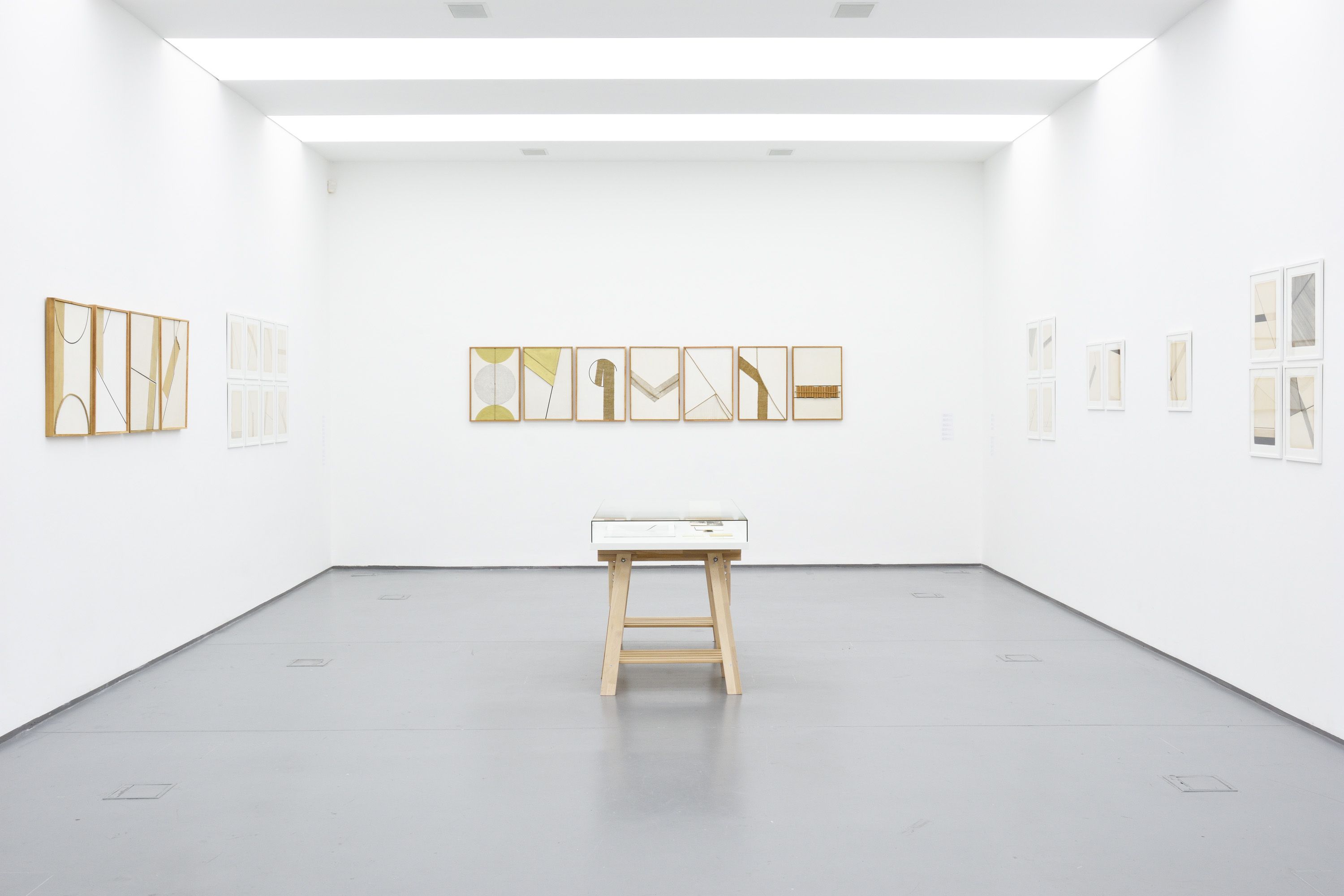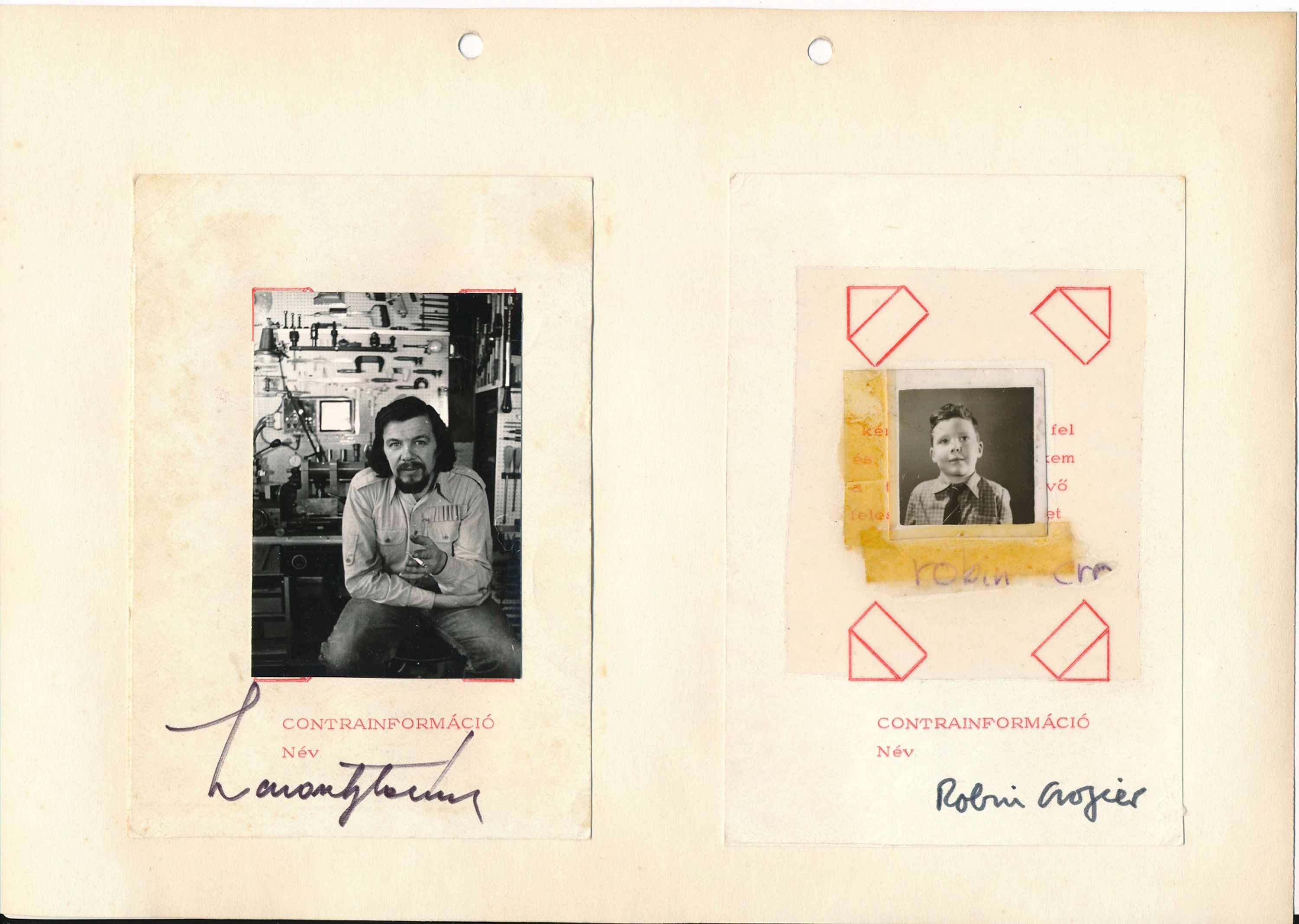Árpád fenyvesi Tóth
Splendid Isolation
| Venue: | acb Gallery, acb Attachment, acb NA |
| Date: | Sep 14 – Nov 16, 2018 |
Description
“There is a striking similarity between me and the people who lived in the 1800s (Walter Benjamin: German People),” wrote Árpád fenyvesi Tóth to his artist friend in 1984, only to continue in a resigned tone: “How much easier it is to join some movement than to be a pioneer.” These self-critical sentences of fenyvesi Tóth may refer to the fact that living in isolation in the Hungarian countryside, namely Balatonfenyves, by the eighties, the artist increasingly felt that he had lost touch with himself as well as the urges that had compelled him to give rise to a consistent oeuvre even despite the circumstances. As the referenced writings of Benjamin’s anthology represented values of a disappearing bourgeois world (tolerance, sovereignty, undisturbed private life) as opposed to Hitler’s aggression, fenyvesi Tóth was trying to preserve his self-identity amidst the moral dilemmas and political crises of the twentieth century and the late Kádár-era.
Arranged in all three spaces of acb Gallery, our latest exhibition reveals this noteworthy oeuvre, which has mostly remained unknown and unaddressed by art historical narratives. Following a few years spent in Budapest, poet, artist and networker Árpád fenyvesi Tóth (29 July 1950, Balatonfenyves – 2014, Balatonfenyves) retreated to the countryside to create his works, far from the scenes of official and underground culture. His art was a fusion of the best traditions of progressive art and the classical avant-garde. Although he was familiar with the inner circles of the Hungarian neo-avant-garde and participated in its most important forums, such as the Chapel Exhibitions at Balatonboglár and the shows of the Young Artists’ Club, his endeavours were associated more with the heritage of the historical avant-garde, the work of Lajos Kassák and the spirit of the Bosch+Bosch group in Subotica. His isolation did not make him uninformed; rather, it entailed an idealistic struggle to maintain a higher mental state, for which he often motivated his friends as well. Owing to his existential situation, artist friendships through correspondence gained special value for him, and mainly owing to his connections in Yugoslavia, he became an active member of the international mail art network. Thus, his works had already made it into significant international mail art archives during his lifetime.
Similarly to his neo-avant-garde contemporaries, Árpád fenyvesi Tóth socialised outside the official institutional system of art, so his intellectual orientation was determined not by classical academic education, but by freely chosen predecessors. In the mid-sixties, he delved into visual poetry, inspired by examples from the historical avant-garde – Tristan Tzara, Károly Tamkó Sirató, Lajos Kassák –, his first opus being the artist’s book Diary of Letters (1966) created in collaboration with his friends (Ferenc Nemes and József Furák). Defying the traditions of line poetry, his concrete and visual poems employed techniques of collage, graphic elements and semiotic research.
Simultaneously with the visual poems, he was making graphic art characterised by the analysis of space as well as traditions of surnaturalism and bioromanticism (Material, Force, Movement series, 1969-1977). Being a student of Tibor Csiky at the Polytechnic of Wood Industry in Budapest, wood as a material gained key importance for him, and it was also on account of Csiky’s influence that he was drawn to structuralism in visual arts. In the first half of the eighties, these early experiences were augmented by his interest in Far-Eastern philosophy, resulting in the panels and paper pieces of his Tao Te Ching series (1980-84). Tao Te Ching is perhaps fenyvesi Tóth’s most mature series, one of the most beautiful examples of Hungarian geometric art. Defined by the esoterism and mysticism also characteristic of the spirit of the age, this inclination of his took shape in chalk drawings (A-C, B-D) in 1982, which created a particular abstracted system of geometric-organic elements, submitting the images of natural beings and phenomena to structural analysis. These works are also related in many ways to Kassák’s image architecture.
He started creating his first experimental comic strips in 1972 after getting acquainted with Yugoslavian Bosch+Bosch founder Slavko Matković’s so-called “signallist strips”. Árpád fenyvesi Tóth’s comic strips are the earliest and most prominent examples of the genre’s Hungarian debut. From 1975, he joined the Hungarian and international mail art network with his serigraphic comics and mailed thousands of mail art pieces to all parts of the world. His correspondence partners included Géza Perneczky, László Beke, Bálint Szombathy, Slavko Matković, Imre Bak, Robin Crozier, György Galántai, Ákos Székely, Endre Szkárosi, Serse Luigetti, John Shannon, Gábor Tóth, Ulises Carrión, Gábor Attalai, György Szemadám, Prutkay Péter, Julien Blaine, Anna Banana, Zoltán Bakos, etc.
As an ironic paraphrase of his remote life far away from cultural centres, of his intellectual isolation, in 1983-84 he realised his comic cycle Splendid Isolation using collage technique, defining it as a “one-way form of communication”. In his last period, in the nineties, he created variants of his previous techniques and media, against the background of a more traditional intellectual universe with disintegrating coherence.
As an attempt to provide a comprehensive view of Árpád fenyvesi Tóth’s artistic career starting in the sixties and culminating in the eighties, the exhibition approaches each stage of the oeuvre in terms of the employed media. acb Gallery presents fenyvesi Tóth’s geometric pieces from the early abstract experiments through the meditative Tao Te Ching series, which structurally analyses spatial relations in line meshes of astonishing complexity. The scale of the series of 90 pieces illustrates fenyvesi Tóth’s essentially procedural work method, which characterised his work regardless of medium. The space of acb Attachment aims to provide an overview of fenyvesi Tóth’s visual poetry, which he was engaged in from the late sixties, building on his early poetic ambitions, primarily based on the tradition of Kassák’s visual poetry. One of his first works in the comic format is the artist’s book compiled in collaboration with József Furák and Ferenc Nemes, titled Diary of Letters (1966-68). acb NA presents Árpád fenyvesi Tóth’s comic strips made from 1972 as a result of his newfound friendship with Yugoslavian artist Slavko Matković.
On the occasion of the exhibition, the book with the same title has been published. The in-depth volume edited by co-author Emese Kürti seeks to interpret comprehensively the work of Árpád fenyvesi Tóth with the texts by Flóra Barkóczi, Miško Šuvaković and Bálint Szombathy.
The exhibition is supported by NKA

